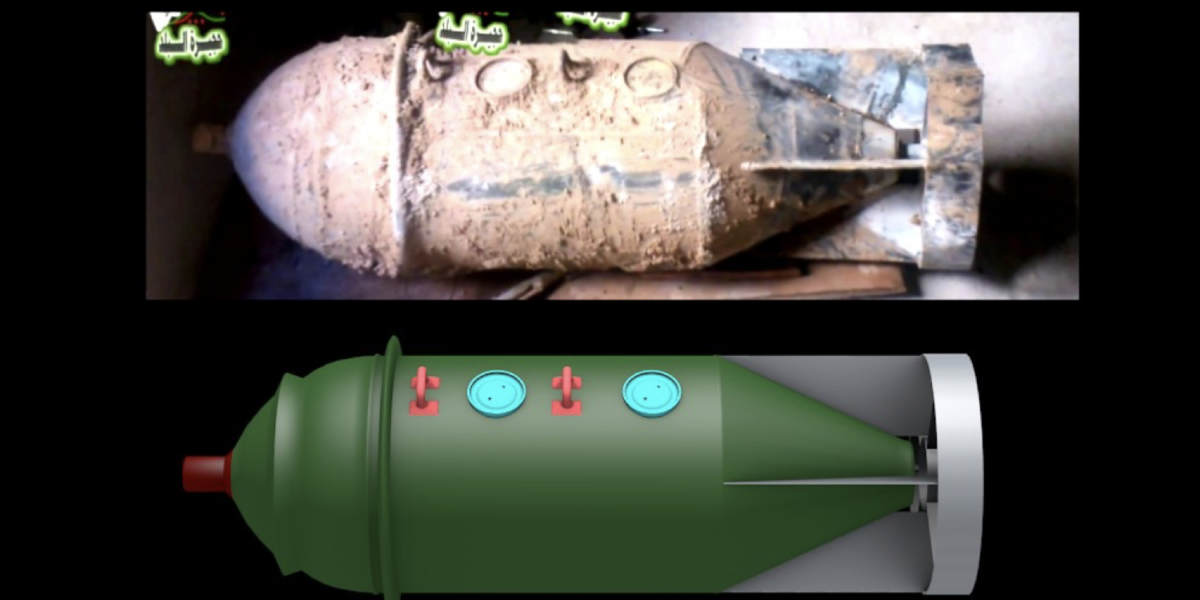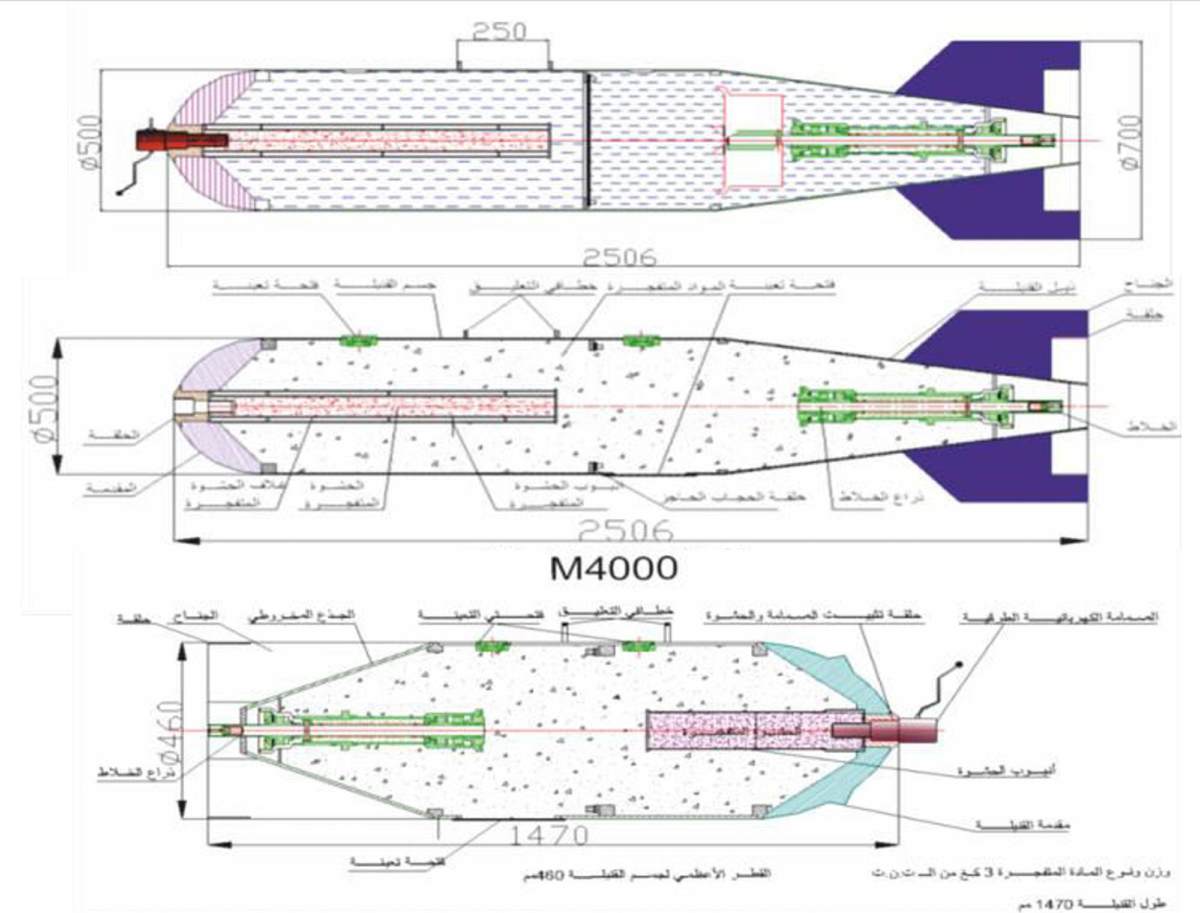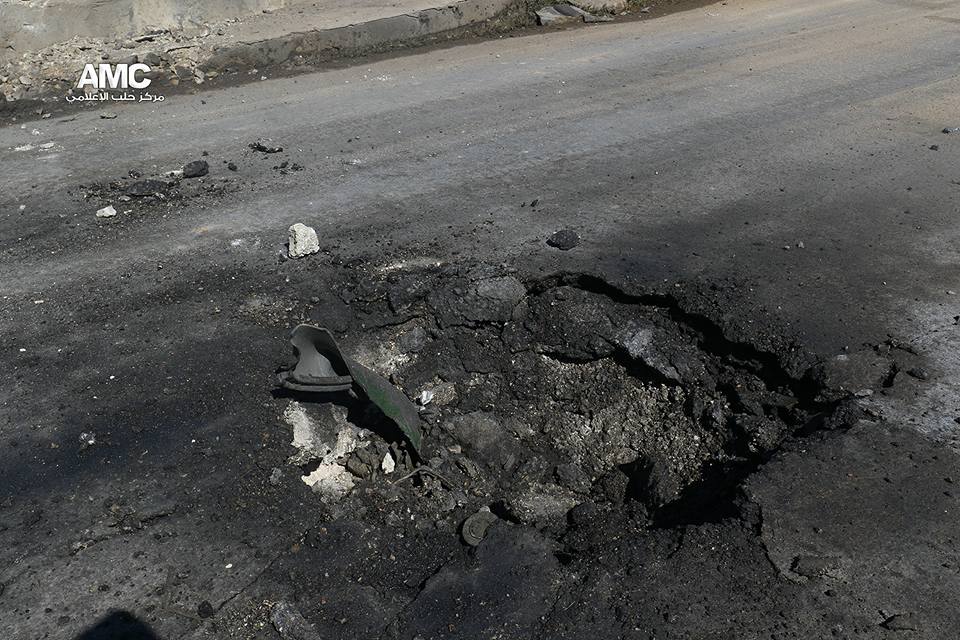How the Latest OPCW Reports Provide More Connections Between the Syrian Government and August 21st 2013 Damascus Sarin Attacks
A careful reading of the latest OPCW reports on the Al-Lataminah and Khan Sheikhoun Sarin attacks reveals not only more details about those two incidents, but the earlier August 21st 2013 Damascus Sarin attacks, increasing the certainty that the Syrian government was responsible for those attacks, despite claims by some that rebel forces were responsible for the attack.
Following the August 21st 2013 attack, in which hundreds were killed and injured, various competing theories emerged about who was responsible for the attack. Investigations by Bellingcat’s predecessor, the Brown Moses Blog, identified various evidence that indicated the Syrian government was responsible. Most significant among this evidence was the use of “Volcano” rockets in the attacks, one of two types of munitions used in the attacks, the other being M14 140mm artillery rockets.
Volcano rockets had been used previously in the conflict by government forces against opposition targets, in both explosive and chemical variants. The remains of rockets had been photographed and filmed by opposition groups since the end of 2012, including a chemical attack that took place two weeks before the August 21st 2013 attacks:
Volcano rockets have also featured in videos filmed by pro-government forces and media, firmly establishing their use by government forces:
The second type of rocket used, the M14 140mm rocket, was confirmed to be in the Syrian governments inventory by a Human Rights Watch investigation, and filmed by locals after the attacks:
There is also no evidence that either type of these munitions have been captured by Syrian opposition forces, and the Syrian government told the OPCW and UN that they have not lost control of any of their chemical weapons. In a 2014 interview with CBRNe World, Ake Sellstrom, who led the UN inspections in Syria, stated the following:
“Several times I asked the government: can you explain – if this was the opposition – how did they get hold of the chemical weapons? They have quite poor theories: they talk about smuggling through Turkey, labs in Iraq and I asked them, pointedly, what about your own stores, have your own stores being stripped of anything, have you dropped a bomb that has been claimed, bombs that can be recovered by the opposition? They denied that. To me it is strange. If they really want to blame the opposition they should have a good story as to how they got hold of the munitions, and they didn’t take the chance to deliver that story.”
As with the Khan Sheikhoun Sarin attack on April 4th, the Russian government’s version of events changed over time, seemingly based on conspiracy theories from fringe websites rather than their own investigation. The UN Mission investigating the attacks were not tasked with establishing the perpetrators of the attack, so a range of alternative theories were proposed in the absence of an official conclusions from international bodies such as the OPCW and UN.
One of the most widely read and disseminated alternative theories came from Seymour Hersh in his two articles for the London Review of Books articles Whose Sarin? and The Red Line and the Rat Line. Hersh’s theory blamed rebel groups for the attacks, and Hersh later claimed on CNN that “It’s not hard to make sarin. You can mix it in the backyard – two chemicals melded together.”
Hersh was not alone in his claims about the simplicity of manufacturing Sarin, both Russia and Syria made their own statements to the same effect. In September 2013 Russian Foreign Minister Sergey Lavrov, referencing the earlier Sarin attack in Khan al-Assal in March 2013, claimed:
“On the occasion of the incident in the vicinity of Aleppo on March 19, 2013 when the United Nations, under the pressure of some Security Council members, didn’t respond to the request of the Syrian government to send inspectors to investigate, Russia, at the request of the Syrian government, investigated that case, and this report, i.e. the results of this investigation are broadly available to the Security Council and publicly,”Lavrov said.
“The main conclusion is that the type of sarin used in that incident was homemade. We also have evidence to assert that the type of sarin used on August 21 was the same, only of higher concentration.”
Syrian President Bashar Assad also made similar claims in a September 2013 interview:
“The sarin gas (is) called kitchen gas. You know why? Because anyone can make sarin in his house”
The claims by Hersh, Lavrov, and Assad of Sarin’s supposed simplicity to manufacture runs counter to real world experiences with the manufacturing of Sarin by state and non-state actors. The Japanese cult, Aum Shinrikyo, spent $30 million to manufacture a quantity of Sarin far smaller than that used in the August 21st Sarin attacks:
“The plant was a free-standing three-story building, staffed by workers with chemistry and chemical-engineering expertise who designed and built proper process controls. It was a complex, expensive operation, and its production capacity was approximately 2 gallons of sarin per batch.”
Despite these contradictions and the clear use of munitions only used by Syrian government forces, there are still those who insist only rebel groups could have been responsible for the August 21st 2013 Sarin attacks, citing the work of Hersh and others. However, the new OPCW reports present new information that provides further evidence of Syrian government responsibility for the August 21st 2013 attacks.
The OPCW-UN JIM report on the April 4th 2017 Sarin attack on Khan Sheikhoun states:
“The five DF samples from the Syrian Arab Republic stockpile and the environmental samples from Khan Shaykhun all contained the impurity phosphorous hexafluoride (PF6). The Mechanism studied the significance of PF6 as a “marker chemical” for DF produced by the Syrian Arab Republic. The study tested the conditions for the formation of PF6 in the production of DF, as well as the possibility of its removal from DF. Laboratory experiments showed that PF6 is formed when hydrogen fluoride (HF) is used as a fluorinating agent in the production of DF. If a different commonly used fluorinating agent is used, no PF6 is formed. PF6 is also not formed in such DF as a result of long-term storage. The test further showed that PF6 cannot be removed through distillation.”
“Based on the foregoing, the Mechanism concludes that the presence of the marker chemical PF6 is evidence that HF was used to produce the DF that was the precursor for the sarin released in Khan Shaykhun. HF is a very aggressive and dangerous gas and is, therefore, difficult to handle. The use of HF indicates a high degree of competence and sophistication in the production of DF and points towards a chemical plant type production.”
“The samples from Khan Shaykhun contain the three types of marker chemicals described above: PF6, isopropyl phosphates and isopropyl phosphorofluoridates. Their presence is a strong indicator that the sarin disseminated in Khan Shaykhun was produced from DF from the Syrian Arab Republic stockpile.”
“Phosphorous hexafluoride (PF6)” is also known as Hexafluorophosphate (HFP), and appears in samples from the March 30th 2017 Al-Lataminah attack, along with Isopropyl phosphorofluoridate, a second marker chemical described in the OPCW-UN JIM’s Khan Sheikhoun report. As the OPCW-UN JIM report states, their presence is an indicator “that the sarin disseminated in Khan Shaykhun was produced from DF from the Syrian Arab Republic stockpile.” Importantly, the presence of HFP is evidence “that HF [hydrogen fluoride] was used to produce the DF that was the precursor for the sarin” and “HF is a very aggressive and dangerous gas and is, therefore, difficult to handle. The use of HF indicates a high degree of competence and sophistication in the production of DF and points towards a chemical plant type production.”
This statement is particularly informative when reviewing samples from the August 21st 2013 Sarin attacks, as per the UN report on the attack. These tests reveal that, along with other chemicals present in test samples from the March 30th and April 4th 2017 attacks, Hexafluorophosphate (HFP) was present in samples from several metal pieces and munition fragments from August 21st 2013 attack sites. This means that we have both a marker chemical the OPCW-UN JIM has described as indicting the Sarin used on August 21st 2013 was “produced from DF from the Syrian Arab Republic stockpile” and, despite claims by President Assad, Sergey Lavrov, and Seymour Hersh, the Sarin used on August 21st 2013 would have required a manufacturing process that “indicates a high degree of competence and sophistication in the production of DF and points towards a chemical plant type production.”
This also raises questions about the Khan al-Assal attack on March 19th 2013. Sergey Lavrov claimed that based on their study of the Sarin used in the Khan al-Assal attack that the Sarin used on August 21st 2013 was the same type, used in a higher concentration. While Russia and Syria alleged rebel groups were responsible for the Khan al-Assal attack, Sergey Lavrov’s claim that the Sarin used in both attacks is the same would in fact indicate that the Syrian government was responsible for the attack, based on the evidence presented by the OPCW and UN. Russia has already presented a dossier of evidence on the Khan al-Assal Sarin attack to the UN, but has yet to make their evidence public. It seems now the content of this report could not only provide more information about who was really responsible for the Khan al-Assal Sarin attack, but other Sarin attacks in the conflict in Syria, and the conclusions and evidence of the OPCW and UN investigations into these other attacks may explain why Russia has so far refused to make their Khan al-Assal dossier public.


